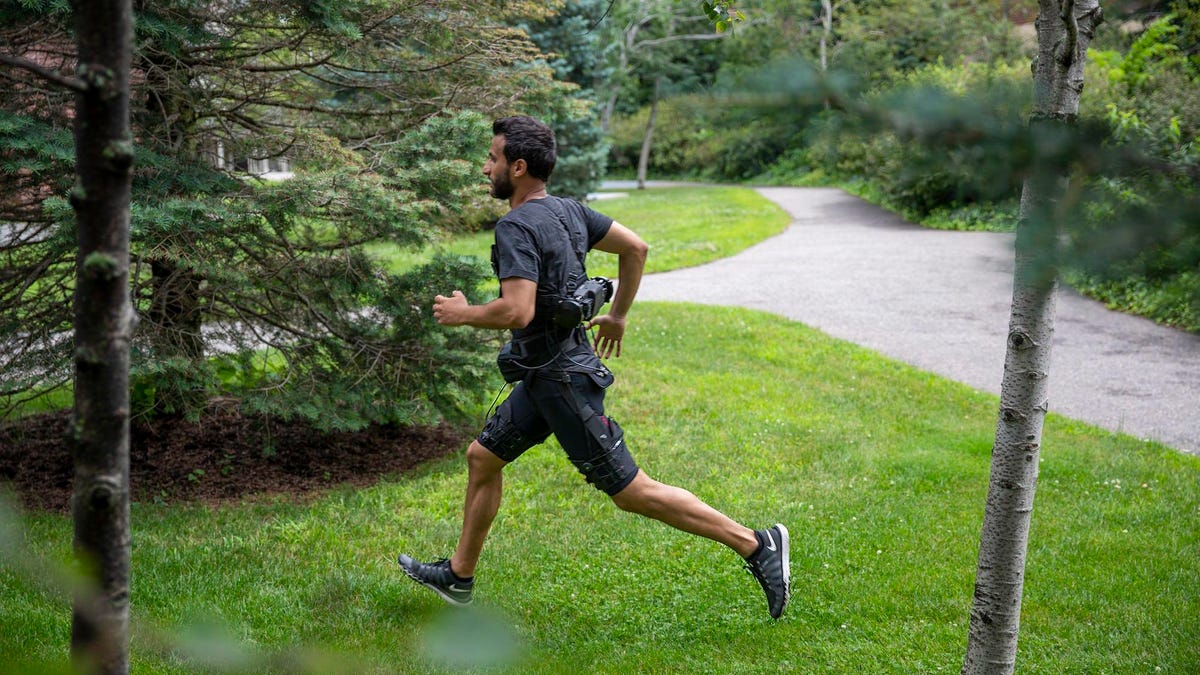Harvard scientists design robot shorts to make running less horrible
The exosuit makes you feel lighter while you walk or run.

The lightweight suit sits on your hips.
Researchers at Harvard University have designed a pair of robot shorts that could make running, a torturous activity for many of us, much easier. The robot shorts are actually a lightweight hip exosuit that can make you feel about 16 pounds lighter while walking and about 12 pounds lighter while running.
The suit does this by reducing the wearer's metabolic cost, or energy spent, by over 9% when walking and 4% when running, the researchers said of their findings, published in Science on Monday. The robot shorts can switch between walking and running seamlessly. When you put on the suit and start to move, it assists you with a "cable actuation system." The cables apply a tensile force between the waist belt and thigh wrap to create an external extension torque at the hip joint that works with your glutes, according to the release.
"We were excited to see that the device also performed well during uphill walking, at different running speeds and during overground testing outside, which showed the versatility of the system," study lead Conor Walsh said in a release.
In an email, the researchers said that at first the exosuit feels strange since it's essentially yanking on your legs, but the body quickly acclimates.
"Turn [the robot] off, and it's like reaching the end of a moving walkway. Your legs feel heavy, you realize how much work the robot was doing, and walking without it seems like a real drag," the team said.
The suit could be helpful to anyone needing to cover large distances -- rescue workers searching disaster areas, US Army soldiers or Marines marching, or hikers making a long trek.
"It is very satisfying to see how far our approach has come," Walsh said in the release, "and we are excited to continue to apply it to a range of applications, including assisting those with gait impairments, industry workers at risk of injury performing physically strenuous tasks, or recreational weekend warriors."
Originally published Aug. 19.
Update, Aug. 20: Adds comment from research team.

